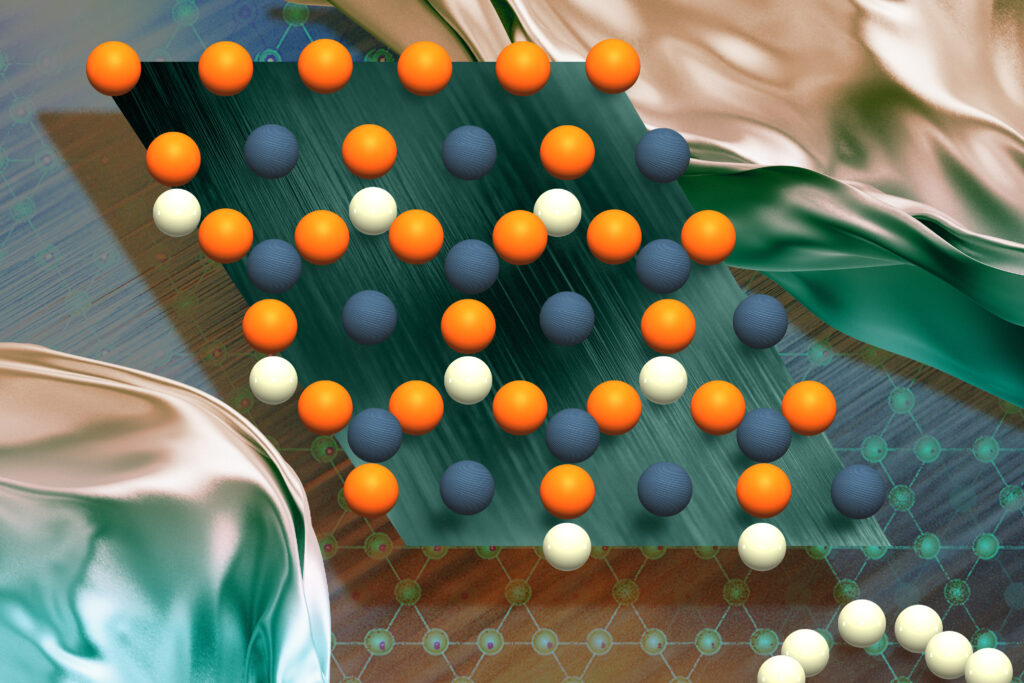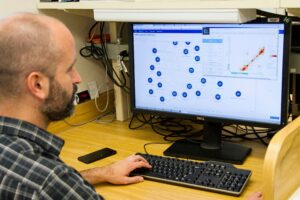
The artificial intelligence models that transform text into images are now proving invaluable in the quest to generate groundbreaking materials. In recent years, generative materials models from tech giants like Google, Microsoft, and Meta have leveraged their vast training datasets to aid researchers in designing tens of millions of new materials. However, these models have faced challenges when tasked with creating materials exhibiting exotic quantum properties such as superconductivity or unique magnetic states. This limitation has been a significant hurdle, as the potential for technological breakthroughs hinges on the discovery of such materials.
In a promising development, researchers at the Massachusetts Institute of Technology (MIT) have unveiled a novel technique that enables popular generative materials models to create promising quantum materials by adhering to specific design rules. These rules, or constraints, guide the models to produce materials with unique structures that can give rise to quantum properties.
Breaking Through the Quantum Bottleneck
The challenge of designing materials with exotic quantum properties has long stymied researchers. For instance, quantum spin liquids, a class of materials with the potential to revolutionize quantum computing, have seen only a dozen candidates identified after a decade of research. The bottleneck in discovering these materials has limited the foundation for technological advancements.
Mingda Li, MIT’s Class of 1947 Career Development Professor, explains, “The models from these large companies generate materials optimized for stability. Our perspective is that’s not usually how materials science advances. We don’t need 10 million new materials to change the world. We just need one really good material.”
The MIT team’s approach, detailed in a paper published by Nature Materials, involved generating millions of candidate materials with geometric lattice structures associated with quantum properties. From this pool, they successfully synthesized two materials exhibiting exotic magnetic traits.
SCIGEN: Steering AI Models Toward Impactful Discoveries
The properties of a material are intricately linked to its structure, and quantum materials are no exception. Certain atomic structures are more likely to exhibit exotic quantum properties. For example, square lattices can serve as platforms for high-temperature superconductors, while Kagome and Lieb lattices can support the creation of materials useful for quantum computing.
To enhance the capabilities of generative models, the researchers developed SCIGEN (Structural Constraint Integration in GENerative model). SCIGEN is a computer code that ensures diffusion models adhere to user-defined constraints during each generation step. This allows users to instruct any generative AI diffusion model to follow geometric structural rules as it generates materials.
“Archimedean lattices give rise to quantum spin liquids and so-called flat bands, which can mimic the properties of rare earths without rare earth elements, so they are extremely important,” says Mouyang Cheng, a co-corresponding author of the work.
The model generated over 10 million material candidates with Archimedean lattices, of which one million passed a stability screening. Using supercomputers at Oak Ridge National Laboratory, the researchers conducted detailed simulations on a smaller sample of 26,000 materials, finding magnetism in 41 percent of the structures. This led to the synthesis of two previously undiscovered compounds, TiPdBi and TiPbSb, with properties aligning closely with AI model predictions.
Accelerating the Quest for Quantum Breakthroughs
Quantum spin liquids hold the potential to revolutionize quantum computing by enabling stable, error-resistant qubits, the cornerstone of quantum operations. However, no quantum spin liquid materials have been confirmed to date. Researchers believe SCIGEN could expedite the search for these elusive materials.
“There’s a big search for quantum computer materials and topological superconductors, and these are all related to the geometric patterns of materials,” says Weiwei Xie of Michigan State University. “But experimental progress has been very, very slow,” adds Robert Cava of Princeton University.
SCIGEN’s ability to generate materials that meet specific geometric constraints offers experimentalists a plethora of new candidates to explore, potentially accelerating research in quantum computer materials.
Professor Steve May of Drexel University, not involved in the research, notes, “This work presents a new tool, leveraging machine learning, that can predict which materials will have specific elements in a desired geometric pattern. This should speed up the development of previously unexplored materials for applications in next-generation electronic, magnetic, or optical technologies.”
Despite the promise of AI-generated materials, the researchers emphasize the continued importance of experimentation to verify whether these materials can be synthesized and how their properties compare with model predictions. Future work on SCIGEN aims to incorporate additional design rules, including chemical and functional constraints, into generative models.
Okabe, the paper’s first author, concludes, “People who want to change the world care about material properties more than the stability and structure of materials. With our approach, the ratio of stable materials goes down, but it opens the door to generate a whole bunch of promising materials.”
This research was supported by the U.S. Department of Energy, the National Energy Research Scientific Computing Center, the National Science Foundation, and Oak Ridge National Laboratory.






